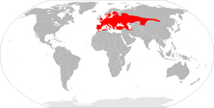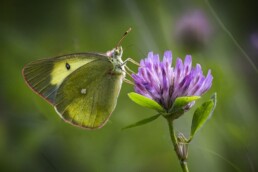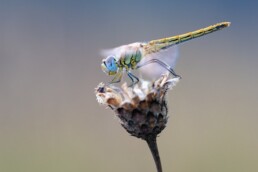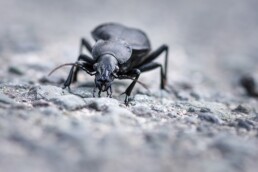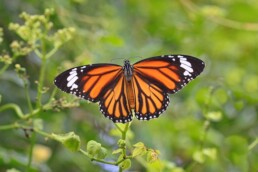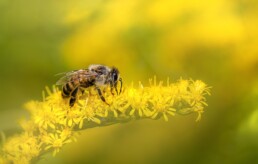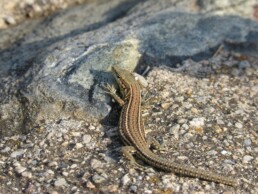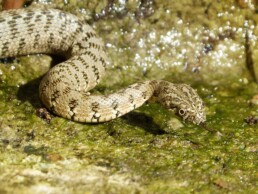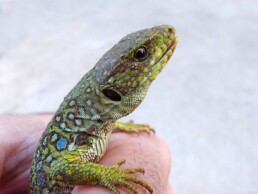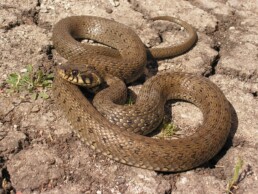Colias spp
Colias Butterfly
Scientific name
The genus Colias includes several species of butterfly, and each has its own scientific name. Some of the better known species include Colias eurytheme and Colias philodice.
Family
The butterflies of the genus Colias belong to the family Pieridae, which is a family of white and yellow butterflies known as “cabbage butterflies”.
Location
Colias butterflies are found in various parts of the world, but are most common in temperate and mountainous regions of Europe, Asia and North America.
Behaviour
Colias butterflies are known for their bright colours and erratic flight patterns. They usually fly close to the ground and are fast and agile in the air. They are active during the day and feed on flower nectar.
Feeding Habits
As mentioned above, Colias butterflies feed on flower nectar, making them important pollinators for many plants. Their larvae, or caterpillars, feed on a variety of plant species, mainly from the Fabaceae family, such as alfalfa and clover.
Reproduction
Reproduction of Colias butterflies involves laying eggs on host plants where the larvae will feed. The caterpillars go through several stages of development before becoming chrysalises and finally adult butterflies. The life cycle of Colias butterflies is typical of many diurnal butterflies.
It should be noted that different species of Colias may have some variations in their feeding habits and preferences. These butterflies are prized for their beauty and their importance in plant pollination.
Odonata
Dragonfly
Scientific Name
Dragonflies belong to the order Odonata, which includes two suborders: Anisoptera (true dragonflies) and Zygoptera (damselflies). There are many different species, so the scientific name varies according to the specific species.
Family
True dragonflies (Anisoptera) belong to several families, including Libellulidae and Aeshnidae. Damselflies (Zygoptera) also have several families, such as Coenagrionidae and Calopterygidae.
Distribution and Habitat
Dragonflies are found worldwide, except in polar regions. Their habitat varies from freshwater areas, such as lakes, rivers and ponds, to marshes and wetlands. They are especially common near bodies of water where larvae can develop.
Behaviour
Dragonflies are known for their agile flight and hunting patterns as they fly. They are predators and hunt insects in flight. They can spend long periods in the air and have exceptional vision that allows them to detect prey.
Feeding Habits
Dragonflies are carnivorous predators as adults. They feed on insects, such as mosquitoes, flies and other small insects that they catch in flight. Their larvae are also predatory and feed on other aquatic organisms, such as mosquito larvae and small crustaceans.
Reproduction
Dragonflies lay their eggs in or near water. The larvae emerge from the eggs and spend most of their lives underwater, where they hunt aquatic prey. When the larvae are ready, they emerge from the water and transform into adult dragonflies through metamorphosis. Adult dragonflies lay eggs and continue the cycle.
Geotrupes spp
Ground beetle
Scientific Name
Ground beetles belong to several species and genera within the family Geotrupidae. Some common species include Geotrupes stercorarius and Trypocopris vernalis.
Family
Geotrupidae.
Distribution and Habitat
Ground beetles are found in many parts of the world, but their distribution varies according to species. They usually inhabit wooded areas, grasslands and pastures, where they find decaying organic matter, such as animal faeces, to feed and reproduce.
Behaviour
Ground beetles are known for their scavenging behaviour. They collect animal droppings, form balls of them and bury them in the ground to deposit their eggs and provide food for larvae. This behaviour benefits ecosystems by aiding in the decomposition of organic matter.
Feeding Habits
Ground beetles feed on decaying organic matter, such as animal faeces and decaying leaves. These substances provide nutrients necessary for their development and reproduction.
Reproduction
Ground beetle reproduction involves burying balls of excrement containing eggs. Larvae hatch from the eggs and feed on the organic matter in the ball. The larvae then develop into pupae and finally into adult beetles that emerge from the soil.
Danaus plexippus
Monarch butterfly
Scientific name
The monarch butterfly is scientifically known as Danaus plexippus.
Family
It belongs to the family Nymphalidae, which is a family of butterflies known for their diversity and beauty.
Distribution and Habitat
Monarch butterflies have a distribution spanning North America, from Canada to Mexico. They are known for their impressive seasonal migrations. During the winter, millions of monarch butterflies gather in colonies in certain oyamel forests in Mexico and in some areas of California.
Behaviour
Monarch butterflies are famous for their massive migrations, which can span thousands of kilometres. They perform an annual migratory cycle between their breeding grounds in North America and their overwintering grounds in Mexico. During migration, these butterflies can fly great distances.
Feeding Habits
Monarch butterflies are known for their larval feeding. Monarch caterpillars feed exclusively on plants of the Asclepiadaceae family, especially the plant known as milkweed (Asclepias). These plants contain toxins that the caterpillars accumulate in their bodies, making them unpalatable to predators.
Reproduction
Monarch butterfly reproduction involves the laying of eggs on milkweed plants by females. Caterpillars emerge from the eggs and feed on the leaves of host plants. After completing their larval development, the caterpillars transform into chrysalises and eventually into adult butterflies. Adult butterflies lay eggs and continue the cycle.
It is important to note that the mass migrations of monarch butterflies are an amazing and unique natural phenomenon in the wildlife world.

Apis mellifera
European honeybee
Scientific name
Apis mellifera is the scientific name of the European honey bee.
Family
It belongs to the family Apidae, which includes other bees, such as solitary bees and some social bees.
Distribution and Habitat
European honey bees are common throughout Europe, but have also been introduced to other parts of the world, including North America, South America, Australia and New Zealand. They are adapted to a variety of habitats, but prefer areas with an abundant source of flowers for collecting nectar and pollen.
Behaviour
European honey bees are social bees that live in organised colonies. Each colony consists of a queen, workers and drones. Workers are sterile females that collect nectar and pollen, care for brood, and build and maintain the hive. Drones are males whose main function is reproduction. The queen is the only fertile female in the colony and lays eggs.
Feeding Habits
European honey bees feed mainly on nectar and pollen. They collect nectar from flowers to make honey and collect pollen as a source of protein. Pollen is also used to feed larvae in the hive.
Reproduction
Reproduction in European honey bee colonies is controlled by the queen. She lays fertilised eggs that will develop into workers and unfertilised eggs that will develop into drones. During the breeding season, the colony may produce new queens. When a new queen emerges, she may leave the hive in search of an existing colony or to form a new colony with a group of workers and drones.
Importantly, European honeybees play a crucial role in the pollination of plants, including many cultivated plants that are important for agriculture and food production.
Podarcis hispanicus
Iberian lizard
Scientific name
The Iberian lizard is scientifically known as Podarcis hispanicus.
Family
It belongs to the family Lacertidae, which includes several species of lizards.
Distribution and Habitat
The Iberian lizard is found on the Iberian Peninsula, including Spain and Portugal. They inhabit a variety of habitats, such as rocky areas, scrubland, open fields, forests and gardens. They are especially common in Mediterranean environments.
Behaviour
They are diurnal and active lizards that can be found basking on stones or vegetation. They are usually fast and agile, allowing them to hunt insects and other invertebrates. They are also known for their ability to change colour to regulate body temperature and communicate with other individuals.
Feeding Habits
The diet of the Iberian lizard consists mainly of insects, spiders and other invertebrates. They are agile hunters and feed on small prey that they capture on the ground or in vegetation.
Reproduction
Reproduction of Iberian lizards usually takes place in spring and early summer. Females lay eggs which they incubate internally and then give birth to live young. The young are completely independent from the moment of birth.
These lizards are an important part of the Mediterranean ecosystem and play a role in controlling insect and spider populations.
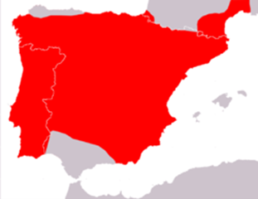
Natrix maura
Viperine snake
Scientific name
The viperine snake is scientifically known as Natrix maura.
Family
It belongs to the family Colubridae, which includes a wide variety of non-venomous snakes.
Distribution and Habitat
The viperine snake is found in various parts of Europe, including the Iberian Peninsula and some areas of France and northwest Africa. It inhabits aquatic habitats, such as streams, rivers, ponds and wetlands. It is a semi-aquatic snake that is comfortable both in water and on land.
Behaviour
The viperine snake is known for its defensive behaviour. When it feels threatened, it may flatten its neck and raise its head, similar to how venomous vipers do, hence its common name. However, it is a non-venomous snake and its bite is not dangerous to humans.
Feeding Habits
These snakes are carnivorous and feed primarily on aquatic prey such as fish, frogs and tadpoles. They may also consume small mammals and birds that come near water.
Reproduction
The viperine snake’s breeding season usually occurs in spring. They lay eggs in hidden nests near water. The young hatch from the eggs and are independent from birth.
It is important to note that despite its defensive behaviour and snake-like appearance, the viperine snake is harmless to humans and is an important component of the aquatic ecosystem in which it is found.
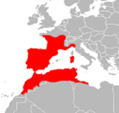
Timon lepidus
Ocellated lizard
Scientific name
The ocellated lizard is scientifically known as Timon lepidus.
Family
It belongs to the family Lacertidae, which includes several species of lizards.
Distribution and Habitat
The ocellated lizard is found in regions of southwestern Europe, including the Iberian Peninsula and parts of France. They inhabit varied habitats, such as Mediterranean forests, scrublands, grasslands and rocky areas. They are usually found in warm, sunny areas.
Behaviour
Ocellated lizards are active, diurnal reptiles that can be found basking on rocks or in vegetation. They are known for their striking colouring, which includes ocelli (round spots) on their dorsum. These lizards can be territorial and display defensive behaviour when threatened.
Feeding Habits
Ocellated lizards feed mainly on insects, spiders, small invertebrates and occasionally fruits and vegetation. They are agile hunters and often stalk their prey before catching them.
Reproduction
Reproduction of ocellated lizards generally occurs in spring and early summer. Females lay eggs in nests dug in the ground. After incubation, the young emerge and are independent from birth.
These lizards are an important part of Mediterranean ecosystems and contribute to the control of insect and spider populations in their natural habitats.

Testudo hernanni
Mediterranean tortoise
Scientific name
The Mediterranean turtle is scientifically known as Testudo hermanni.
Family
It belongs to the family Testudinidae, which includes the tortoises.
Distribution and Habitat
Testudo hermanni is found in various regions of the Mediterranean, including southern Europe and some areas of North Africa. It inhabits dry, rocky habitats, such as scrublands, grasslands and vegetated slopes.
Behaviour: These tortoises are primarily terrestrial and spend much of their time on land. They are known for their slow and cautious behaviour. When threatened, they may retract their limbs and head into their shell to protect themselves.
Feeding Habits
Testudo hermanni are herbivorous and feed primarily on a vegetarian diet. They consume a variety of plants, including herbs, flowers, fruits and green leafy vegetation.
Reproduction
Reproduction of these tortoises generally occurs in the spring and early summer. Females lay eggs in nests dug in the ground. After incubation, hatchlings emerge and are independent from birth.
It is important to note that some subspecies of Testudo hermanni are endangered due to habitat loss and illegal capture for the pet trade. Conservation of these turtles and protection of their habitats are essential for their survival.
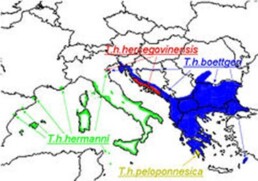
Naja naja
Collared snake
Scientific name
The collared cobra is scientifically known as Naja naja.
Family
It belongs to the family Elapidae, which includes other venomous snakes, such as sea snakes and cobras.
Distribution and Habitat
The collared cobra is found in various parts of Asia, including the Indian subcontinent, Southeast Asia and some areas of Sri Lanka. It inhabits a variety of habitats, from tropical rainforests to urban areas. Often found near water, such as rice paddies and wetlands.
Behaviour
Collared cobras are known for their defensive behaviour and their ability to raise their necks in a “collar” when they feel threatened. This behaviour is a warning to potential predators or intruders. They are generally solitary and nocturnal snakes, which means they are most active at night.
Feeding habits Collared cobras are carnivorous and feed mainly on other reptiles, such as frogs, lizards and other snakes. Their venom paralyses their prey, allowing them to swallow them whole.
Reproduction:
Reproduction of collared cobras involves egg-laying. Females lay their eggs in nests that they build on land or in sheltered locations. After incubation, the young hatch and are independent from birth.
It is important to note that the collared cobra is a venomous snake and its bite can be dangerous to humans. If you encounter a collared cobra, it is important to keep your distance and not attempt to interact with it, as they are defensive snakes and may attack if they feel threatened.
